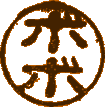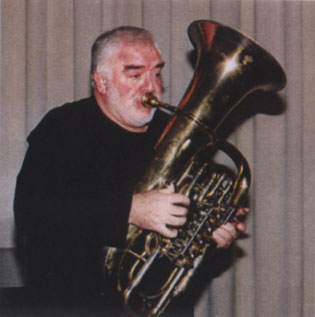Miraphone Tuba in G
When Roger Bobo returned to Los Angeles in 1964 after the 2 years in Amsterdam with the Concertgebouw Orchestra he began his 25 year period with the Los Angeles Philharmonic Orchestra. In those first years, Roger was always seeking instruments with the optimal sound for any specific work. He took note that most symphony trumpet players of the time had a collection of instruments in different keys and sizes in hopes that one would provide the perfect timbre and technical fluency for the task at hand. This approach seemed to work very well for trumpet players, why not tubists? One problem that all orchestral tubist must address is what is the correct instrument to use in the works of Berlioz. The problem is not hitting the high notes of these parts originally written for ophicleide. The real challenge is to get a tone colour that is both appropriately close to that of the ophicleide while fitting in to the sonic texture of a modern symphony orchestra. In seeking the most appropriate instrument possible for the works of Berlioz., Roger remembered the rumours of the G tuba he had heard in the 50's. He asked the Lockie Music Exchange about this instrument and was given it as a gift from Lockie's the next day.The G tuba can be played with the appropriate energy, especially in the frequent passages that lay in unison with the trombones. Most importantly, it still fits inside the trombone sound. Roger found that the same passages played on a normal symphonic F tuba tended to dominate the trombone section. It's difficult to say why Miraphone had built this G tuba and why it was at Lockie's. Miraphone has no record of building such a tuba! The only plausible explanation offered is that it was originally intended to be an F tuba in a German military band. Instruments for German military bands at that time were tuned one half tone sharp for brilliance, that would have already put the instrument in F#. It has been speculated that because of its small size and because it may have been an already-high F#, it was changed to a G and subsequently rejected and stored away. When Roger moved to Japan he gave the G tuba as a gift to old student and friend Kiyoshi Sato who arranged Roger’s first classes at the Musashino Academy of Music. |


 In the mid 50's, when Miraphone was a new instrument on the market and was
imported by Lockie Music Exchange in Los Angeles. There were rumours that Miraphone
had a G tuba, and it just happened to be at Lockie. In short, no one was interested.
In the mid 50's, when Miraphone was a new instrument on the market and was
imported by Lockie Music Exchange in Los Angeles. There were rumours that Miraphone
had a G tuba, and it just happened to be at Lockie. In short, no one was interested.